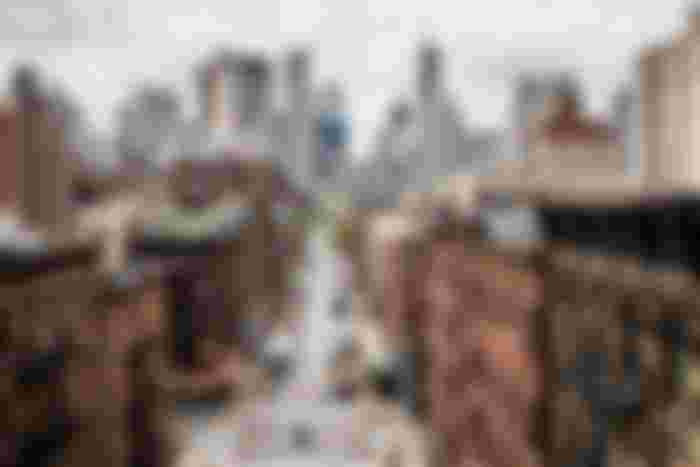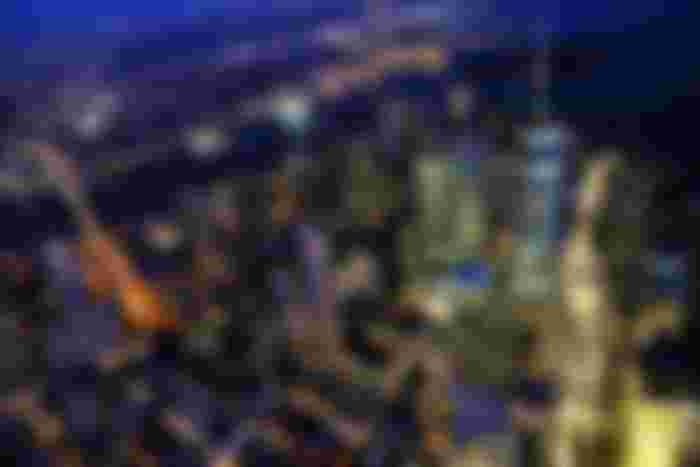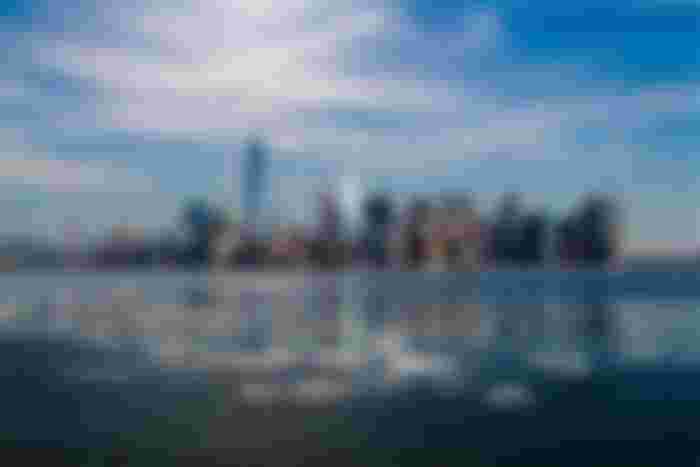New York is the 4th most populous, 27th largest, and 7th densely populated of the 50 states in the United States. It is located in the northeastern part of the United States. New York became the 11th state to join the union when it was granted statehood on July 26, 1788. Pennsylvania, Rhode Island (water border), Vermont, Connecticut, Massachusetts, and New Jersey are its six bordering states. Here is a complete list of the 50 states and their borders. New York (sometimes known as the Empire State) is divided into 62 counties. Albany is the state capital. New York State's postal abbreviation is NY. Let us discover more about New York's history, geography, people, economics, and more with these New York facts.

New York City, formally the City of New York, traditionally New Amsterdam, the Mayor, Alderman, and Commonality of the City of New York, and New Orange, byname the Big Apple, is a city and port in southeastern New York state, northeastern United States, located at the mouth of the Hudson River. It encompasses Manhattan and Staten islands, the western sections of Long Island, and a tiny portion of the New York state mainland to the north of Manhattan, making it the largest and most influential American city. In truth, New York City is a collection of various neighborhoods spread across the city's five boroughs—Manhattan, Brooklyn, the Bronx, Queens, and Staten Island—each with its own distinct culture. It's possible that moving from one metropolitan neighborhood to the next is like to traveling from one country to another. New York City is the country's most populated and worldwide city.
Its metropolitan area includes sections of New York, New Jersey, and Connecticut. New York is both the entryway to the North American continent and its favored exit to the world's oceans, located where the Hudson and East rivers pour into one of the world's greatest harbors.

The city's personality
New York is the country's most ethnically diverse, religiously diversified, commercially oriented, notoriously crowded, and, in many people's eyes, most attractive urban center. No other city has contributed more images to the collective consciousness of Americans: Wall Street is synonymous with finance, Broadway with theater, Fifth Avenue with shopping, Madison Avenue with advertising, Greenwich Village with bohemian lifestyles, Seventh Avenue with fashion, Tammany Hall with machine politics, and Harlem with images of the Jazz Age, African American aspirations, and slums. The name tenement conjures up images of both urban misery and immigrant hordes seeking for upward mobility. More Jews live in New York than in Tel Aviv, more Irish live in Dublin, more Italians live in Naples, and more Puerto Ricans live in New York than in San Juan. The Statue of Liberty is its emblem, but the city is an icon in and of itself, the stage where Emma Lazarus's "tempest-tost" people of all nations are turned into Americans—and if they stay in the city, they become New Yorkers.
The location of the city
New York's granite bedrock dates back roughly 100 million years, but the city's current topography is mostly the result of the glacial retreat that occurred around 10,000 years ago, marking the end of the Wisconsin Glacial Stage. Great erratic boulders in Central Park in Manhattan, deep kettle depressions in Brooklyn and Queens, and the glacial moraine that still exists in areas of the metropolitan region bear quiet witness to the ice's immense strength. The city's canals were likewise carved out by glacial retreat. The Hudson and East rivers, as well as Spuyten Duyvil Creek and Arthur Kill, are all Atlantic Ocean estuaries, with the Hudson tidal as far north as Troy. The water erodes the soil and adds fresh sediments elsewhere, so the nearly 600 miles (1,000 km) of New York shoreline are constantly at odds with it.

The layout of the city
Hundreds of new skyscrapers are built on top of the city's historic bedrock, which is immovable. More of these incredible structures may be found in New York than in any other city on the planet. Architects may disagree about the origins of the modern skyscraper, but most agree that Manhattan was the place where steel skeletons were combined with elevators to create a genre of buildings that could be reached at great heights in a practical manner; the word "skyscraper" was coined in the 1880s to describe this New York phenomenon. Animal and Native American trails across difficult terrain were the original means for getting across Manhattan Island; Broadway still follows one of these routes, which extended northward around the island. In the 17th century, city planning was strange to burghers, and roads were sporadically approved; just a few essential ones to outlying agricultural communities were maintained, and the city did not designate a commissioner until 1798.

The New York City boroughs
The consolidation of the bigger city in January 1898 impacted the governmental structure of New York. Modern New York was formed when the independent city of Brooklyn, the portion of Westchester county known as the Bronx, Staten Island, and large parts of Queens county were added to Manhattan following a referendum, following the 19th-century pattern of urban imperialism and in large part spurred by the challenge that Chicago posed to its primacy. Although the city's population grew from around 2 million to 3.4 million, much of the new land remained rural, and only two-fifths of the city's roadways were paved. The five boroughs, which were soon designated as New York state counties, constituted the primary administrative units of the city. From 1901 to 1990, the borough president's duties included serving on the Board of Estimate, a central financial agency, in order to retain "local pride and devotion." Borough presidents are now responsible for nominating members of community boards, the City Planning Commission, and the Board of Education, as well as serving as conduits for neighborhood concerns to the mayor, the city's top administrator. These individuals bear a significant burden in the ongoing debate in New York between strong mayors demanding central control and local leaders wanting autonomy.
Image Sources:
Lead Image by Ronile from Pixabay
Image by Michael Pewny from Pixabay
Image by igormattio from Pixabay
Image by Jo Wiggijo from Pixabay
Image by Leonhard Niederwimmer from Pixabay




New York is highly urbanised. It housed the United Nations Organization. Am a Geographer, New York is home to many people from different parts of the world. Without doubt , it is most loved by many people. It's highly industrialized. Thanks greatly for your superb analysis of the city. You displayed high understanding of the city. Am impressed. Most of these things were part of what we were taught in World Geography. I pray to visit the city one day . Keep it up. Stay blessed. .